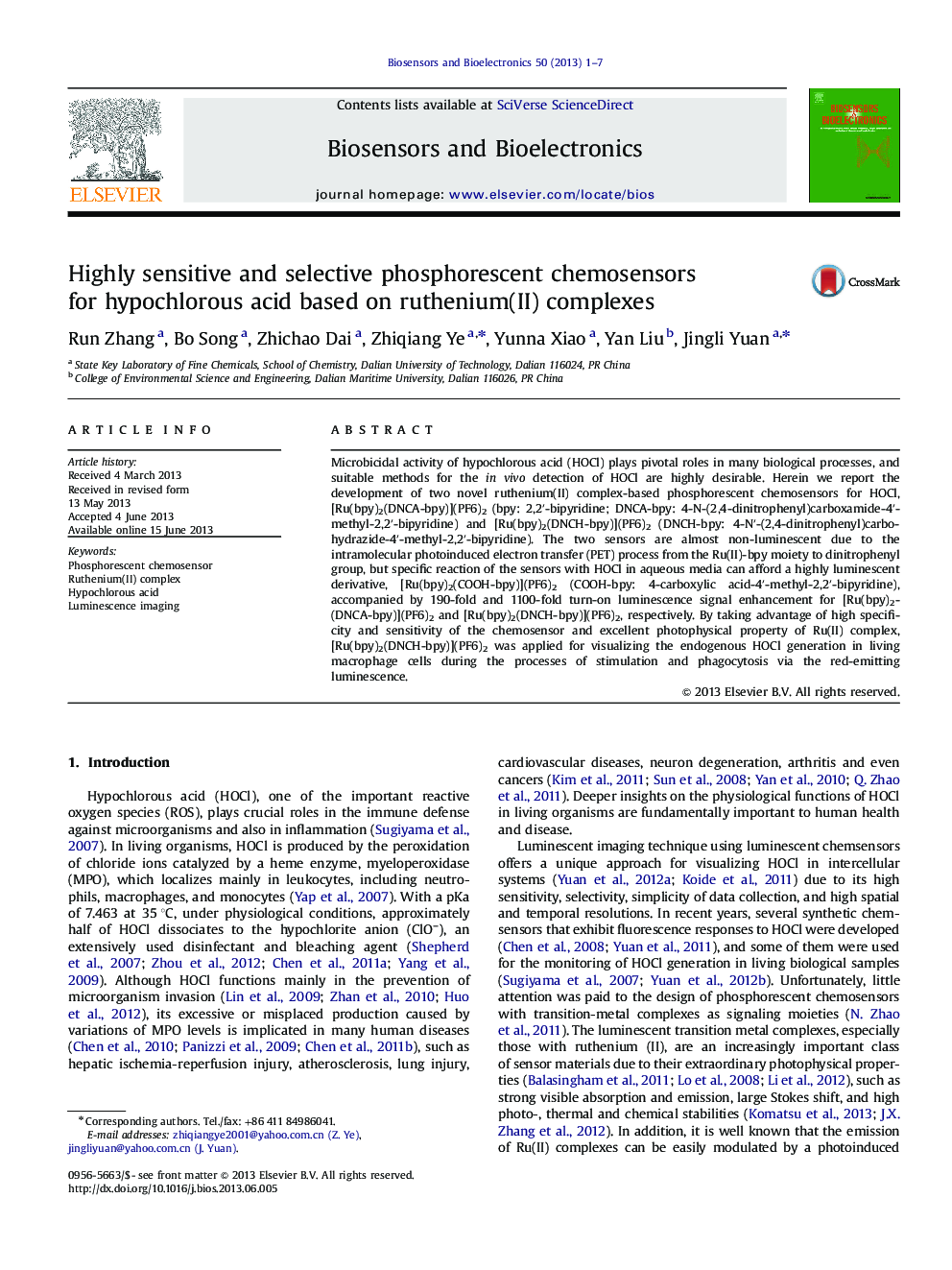| Article ID | Journal | Published Year | Pages | File Type |
|---|---|---|---|---|
| 7233701 | Biosensors and Bioelectronics | 2013 | 7 Pages |
Abstract
Microbicidal activity of hypochlorous acid (HOCl) plays pivotal roles in many biological processes, and suitable methods for the in vivo detection of HOCl are highly desirable. Herein we report the development of two novel ruthenium(II) complex-based phosphorescent chemosensors for HOCl, [Ru(bpy)2(DNCA-bpy)](PF6)2 (bpy: 2,2â²-bipyridine; DNCA-bpy: 4-N-(2,4-dinitrophenyl)carboxamide-4â²-methyl-2,2â²-bipyridine) and [Ru(bpy)2(DNCH-bpy)](PF6)2 (DNCH-bpy: 4-Nâ²-(2,4-dinitrophenyl)carbohydrazide-4â²-methyl-2,2â²-bipyridine). The two sensors are almost non-luminescent due to the intramolecular photoinduced electron transfer (PET) process from the Ru(II)-bpy moiety to dinitrophenyl group, but specific reaction of the sensors with HOCl in aqueous media can afford a highly luminescent derivative, [Ru(bpy)2(COOH-bpy)](PF6)2 (COOH-bpy: 4-carboxylic acid-4â²-methyl-2,2â²-bipyridine), accompanied by 190-fold and 1100-fold turn-on luminescence signal enhancement for [Ru(bpy)2(DNCA-bpy)](PF6)2 and [Ru(bpy)2(DNCH-bpy)](PF6)2, respectively. By taking advantage of high specificity and sensitivity of the chemosensor and excellent photophysical property of Ru(II) complex, [Ru(bpy)2(DNCH-bpy)](PF6)2 was applied for visualizing the endogenous HOCl generation in living macrophage cells during the processes of stimulation and phagocytosis via the red-emitting luminescence.
Related Topics
Physical Sciences and Engineering
Chemistry
Analytical Chemistry
Authors
Run Zhang, Bo Song, Zhichao Dai, Zhiqiang Ye, Yunna Xiao, Yan Liu, Jingli Yuan,
